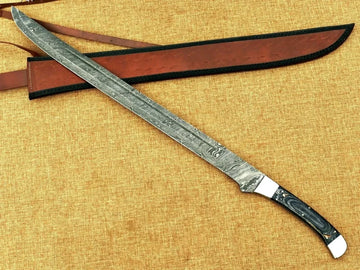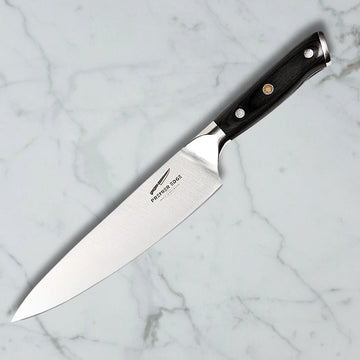Handmade swords have captivated human imagination for millennia, serving as symbols of power, honor, and craftsmanship. From the legendary katanas of feudal Japan to the broadswords of medieval Europe, these meticulously crafted weapons represent the pinnacle of metallurgical skill and artistic expression. In this article, we'll explore the world of handmade swords, their history, craftsmanship, and enduring appeal in the modern world.
Historical Significance
Swords have been integral to human history for thousands of years. Ancient civilizations in Egypt, Greece, and China developed sophisticated sword-making techniques, each culture imbuing their blades with unique characteristics. The Roman gladius, the Persian scimitar, and the Indian talwar all showcase the diversity of sword designs across different regions and time periods.
During the Middle Ages and Renaissance, European swordsmiths perfected the art of creating resilient, sharp blades capable of withstanding the rigors of combat. Meanwhile, in Japan, the katana reached its zenith of development, becoming not just a weapon but a spiritual object revered by the samurai class.
The Craft of Sword Making
Creating a handmade sword is a complex process that requires years of training and experience. The basic steps include:
- Forging: The blade is formed by heating and hammering high-carbon steel, often folding it multiple times to remove impurities and increase strength.
- Heat Treatment: The blade is carefully heated and quenched to achieve the right balance of hardness and flexibility.
- Grinding and Polishing: The blade is shaped and polished to achieve its final form and sharpness.
- Hilt Construction: The handle, guard, and pommel are crafted and fitted to the blade.
- Scabbard Making: A protective sheath is created, often as intricately decorated as the sword itself.
Each step requires precision and artistry, with master swordsmiths often spending months on a single blade.
Types of Handmade Swords
While there are countless variations, some popular types of handmade swords include:
- Katana: The curved single-edged sword of the Japanese samurai.
- Longsword: A versatile European sword used with two hands.
- Rapier: A slender, sharply pointed sword used for thrusting.
- Dao: A single-edged Chinese sword, often with a slightly curved blade.
- Viking Sword: A double-edged sword with a distinctive hilt design.
Materials and Techniques
Modern swordsmiths have access to a wide range of high-quality steels, allowing for blades that combine historical aesthetics with contemporary performance. Some popular steel types include:
- High-carbon steel: Offers excellent hardness and edge retention.
- Damascus steel: Known for its distinctive wavy patterns and exceptional strength.
- Spring steel: Provides a good balance of toughness and flexibility.
Advanced heat treatment techniques, such as differential hardening, allow for blades that are hard at the edge for sharpness but more flexible in the core for durability.
The Modern Appeal of Handmade Swords
Despite no longer being primary weapons of war, handmade swords continue to fascinate people around the world. They are sought after by:
- Collectors: Who appreciate the historical significance and craftsmanship.
- Martial Artists: Particularly those practicing traditional sword arts.
- Historical Reenactors: Who use replica swords for authenticity in their portrayals.
- Film and Theater Productions: For props and special effects.
- Art Enthusiasts: Who view swords as sculptural objects of beauty.

Legal Considerations
It's important to note that laws regarding sword ownership vary widely by country and even by local jurisdiction. In many places, handmade swords are classified as art objects or collectibles, but restrictions may apply to carrying or displaying them in public.
Preserving a Timeless Art
The craft of handmade sword making faced near-extinction in the early 20th century as firearms became dominant in warfare. However, a resurgence of interest in recent decades has led to a new generation of skilled swordsmiths. These artisans combine traditional techniques with modern metallurgy to create blades that are often superior to their historical counterparts.
Conclusion
Handmade swords represent a fascinating intersection of history, art, and craftsmanship. Whether admired for their beauty, collected for their historical significance, or used in martial arts practice, these blades continue to hold a special place in human culture. As long as there are skilled artisans willing to dedicate themselves to this ancient craft, the art of handmade swords will continue to thrive, connecting us to our past while pushing the boundaries of what's possible in metallurgy and design



